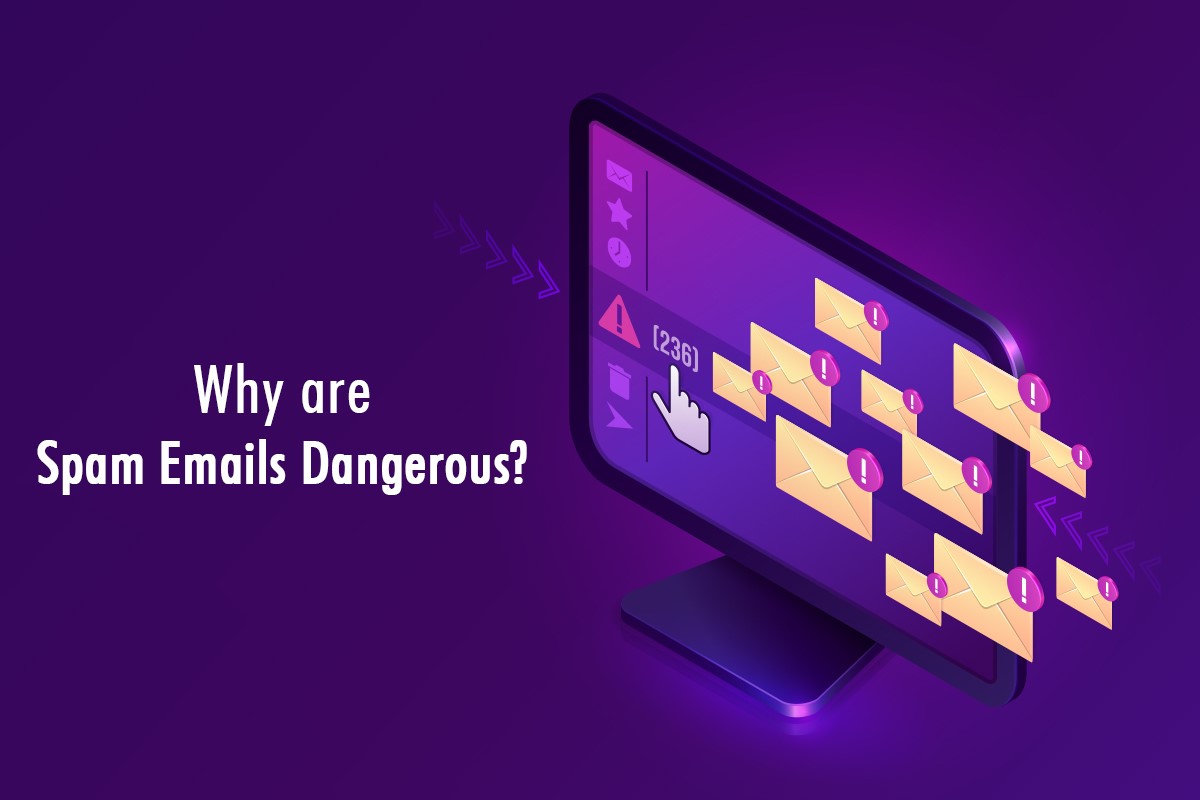
Spam emails are junk or unsolicited emails sent out in bulk. Typically, these emails are sent for commercial and marketing purposes. They might be sent in huge volumes by networks of infected computers to gain access to your personal information.
Here’s how spam emails are dangerous.
-
They allow hackers to track your online activity
Hackers install spyware when you download an unknown email attachment or click a link. Spyware allows third parties to gain your personal information and monitor your activities. The software is capable of tracking usernames, emails, and passwords. In addition, it offers cybercriminals an easy way to get information about their bank accounts.
-
Make way for phishing attempts
Phishing is a direct way of gaining personal or confidential information like passwords and username details. Scammers send spam emails posing as legitimate sources.
The key to spotting such attempts is looking at the emails and ensuring they are sent from known recipients. If the questions asked seem too personal or the recipient is unknown, you must not click on any link or image or download the attachment.
-
Installs ransomware on your computer
Spam emails can typically install ransomware on your computer, which will lock all your essential files. In addition, your computer will be held for ransom, and a note will appear on the screen requesting a random, usually Bitcoin.
If you are a victim of ransomware, do not make the mistake of paying the ransom.
So spam emails are dangerous because they allow hackers and cybercriminals to spy on your online activities, steal sensitive information, and lock your computer. You must take steps to stop spam emails and stay safe.
Stay Safe by Being Aware of These Common Types of Spam emails
One way to stay safe is to know about the different kinds of spam emails that lure people into giving away their information. Armed with the right information, you can protect your information from falling into the wrong hands.
-
Emails concerning commercial Advertisements
The CAN-SPAM act lays out the guidelines to help distinguish between email messages that are spam and legitimate advertisement.
When businesses get your email address, they might subscribe you to their newsletter. But, again, this is a low-cost way of selling their products. So whenever you are filling out an online form or looking for a checkbox to opt out or into a marketing email, businesses are collecting your information.
Although these emails can be annoying, they’re harmless. If you click the unsubscribe button, you will stop getting messages from advertisers.
-
Sweepstakes Winners
Sending emails to lure recipients to click on attachments or links is a common trick scammers apply. These emails contain attractive offers like the recipient has won a prize or sweepstakes. However, when you go to claim the prize, you will be asked to submit personal information.
Before submitting your personal information or clicking on any link, you must verify the legitimacy of the competition.
-
Email spoofing
Most spam emails successfully mimic legitimate corporate messages, and this is known as email spoofing. In a spoofing attack, cybercriminals pick a company brand that victims will trust, like an employer or bank, and then use the exact logos and formatting of the company to send out the emails.
Before replying or clicking on anything, you must always click the From line to verify the sender’s email address. If you have doubts, it is best to contact the company or the bank.
-
Financial or money scams
Preying on the goodwill of people is what scammers do. Money scams start with emails asking for help in difficult situations. The sender of the spam email may fabricate a heart-wrenching story about a tragic life event or family emergency. There might also be scams promising to give you an X amount if you pay a small processing fee or share your bank account information.
You must always be cautious before sending money and must avoid giving away your personal information.
Can You Take Steps to Avoid Being Scammed?
Some practical steps you can take to keep your inbox safe are:
- Do not sign up for promotions or newsletters of unknown companies. Before subscribing or signing up, you must verify the company’s legitimacy. Google the brand online and double-check the email address before clicking on any button.
- You must never click on suspicious-looking links or download attachments from emails from unknown senders. It is best to verify the source of the email and only then click on the attachment, link, or image. Typically, spam emails contain malicious links that may steal your sensitive information and result in financial losses or identity theft.
- You can change your email address if you get too many spam emails. It means you have generously given your email address to businesses and signed up for too many newsletters.
The Bottom Line
Spam emails are dangerous because they allow scammers to steal your information and use them for malicious intent. Follow this guide to stay safe.





